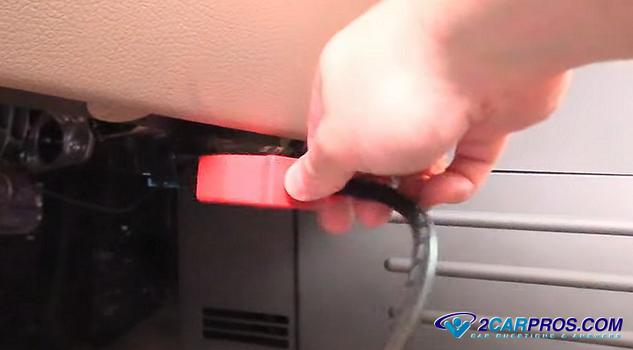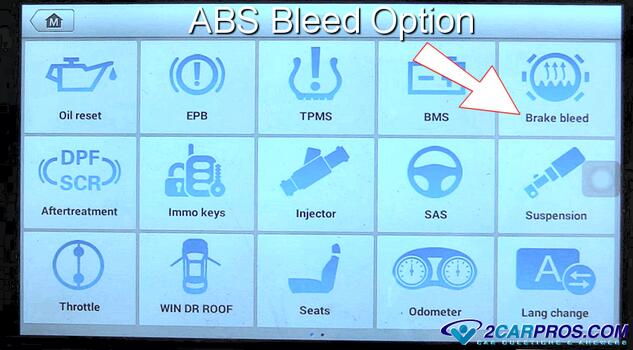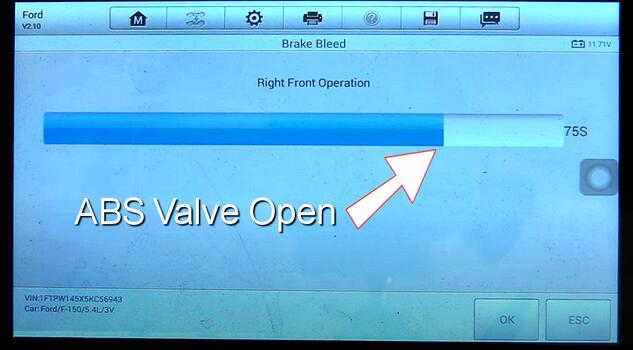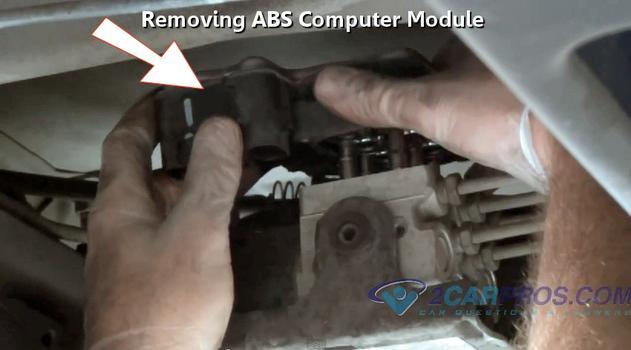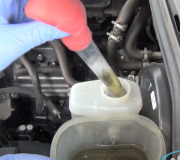Introduction
Bleeding an ABS (Anti-lock Braking System) and traction control system is a critical maintenance task that ensures optimal brake performance and safety. When performing a brake system service air can get trapped inside the ABS control module causing the brake pedal to go to the floor or be spongy. ABS brake and traction control systems can be especially tricky the air will not "bleed out" under normal bleeding procedures.
Tool Required
- ABS scan tool
ABS System Control Module Bleed Procedure
Before you begin, please go over this typical automotive brake bleed guide and video which will need to be performed in conjunction with the ABS control module bleed.
1. Connect Advanced Scanner: A typical engine or drive train scanner will not have the capabilities to access and operate the ABS module control valves which modulate each wheel. You will need an advanced automotive scanner or a scanner bespoke to the ABS and traction control systems. You can find this style of scanner on Amazon or auto parts store starting at about $130.00. Confirm that the scanner is capable of opening the ABS valves before the purchase, then plug the scanner into the ALDL port.
2. Navigate Scanner Prompts: The scanner should boot up, navigate through the year, make and model of your car or use the VIN identification option to load the correct ABS and traction control systems.
3. Select ABS Bleed Option: The scanner with have a menu displaying various options and capabilities, simply choose the ABS brake bleed option.
4. Initiate Bleed Sequence: Once the bleed option has been selected, the scanner will prompt you to open a particular valve coinciding with the valve the scanner has opened for service. At this point, bleed the system in the typical manner within the giving duration, this scanner gives you 75 seconds for each valve, (wheel). Continue until the remaining valves are bled and the job is completed.
5. Finalization: Unplug the scanner for the data port connector and recheck the brake fluid level inside the master cylinder reservoir. Test the brake pedal for firmness and you are all set, DO NOT drive a vehicle without a good brake pedal.
Pro Tip
- If the ABS system has been worked many times, (extreme driving) it can produce air inside the ABS control module valves. This is due to the action of the valves which pulsate rapidly which can cavitate air into the brake fluid.
- Some brake fluids are not compatible with each other, distinctive ratings define the chemicals in which the fluids are produced such as mineral oil, ester glycol and synthetic oils.
- Always add fluid from a sealed container to avoid dirt and moisture contamination.
Conclusion
Bleeding an automotive ABS and traction control system is a critical maintenance task that ensures your vehicle's braking system is functioning optimally. Most of the time a normal brake bleed will be sufficient to return the brake pedal to normal operating conditions, but occasionally air will get trapped inside the ABS module control valves. Opening the ABS control valves will purge the remainder of the air and help the brake system work correctly.
Watch the Video!
Please watch this video of the job being done to glean additional helpful information.
Credits
This guide knowledge base was created by the 2CarPros Team, and by Ken Lavacot: Automobile repair shop owner and certified master automobile technician of over 30 years. If you have question or need help please ask one of our experts we are happy to help. Please visit our 2CarPros YouTube Channel for additional car repairs.

